Glaciers are not only awe-inspiring for their size but also for their incredible natural beauty. Some glaciers stand out due to their unique structures and colors, making them truly surreal landscapes. Below are some of the most stunning examples of glaciers that captivate with their unusual features.
Perito Moreno Glacier, Argentina
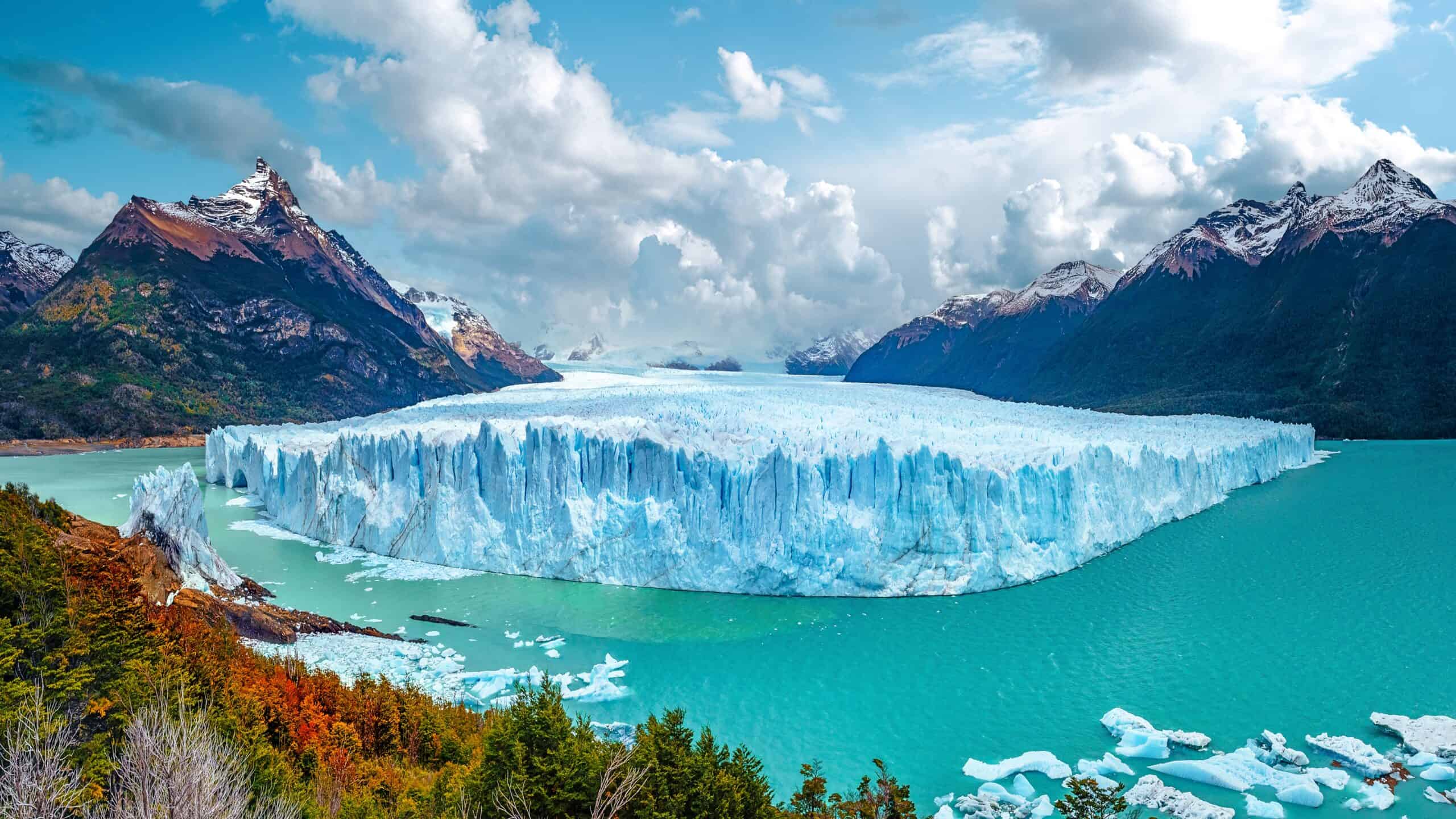
Perito Moreno Glacier is known for its vibrant blue ice and constantly shifting structure. Towering ice cliffs line its front, some reaching over 200 feet in height. One of the few glaciers that is still growing, its dynamic nature creates massive ice breaks and thunderous crashes. The glacier spans over 97 square miles and feeds into the beautiful Lake Argentino. Visitors flock to see the dazzling contrasts between the white ice, blue water, and surrounding mountains.
Vatnajökull Glacier, Iceland

Vatnajökull Glacier is Europe’s largest ice cap, with unique ice caves forming during the winter months. Its thick ice sheets hold within them volcanic ash from past eruptions, creating surreal black streaks across the ice. Glacial rivers run beneath the ice, carving intricate tunnels. The blend of black ash and pure white ice offers a stark and unforgettable landscape. The glacier also feeds into multiple outlet glaciers that create massive crevasses and icefalls.
Mendenhall Glacier, USA
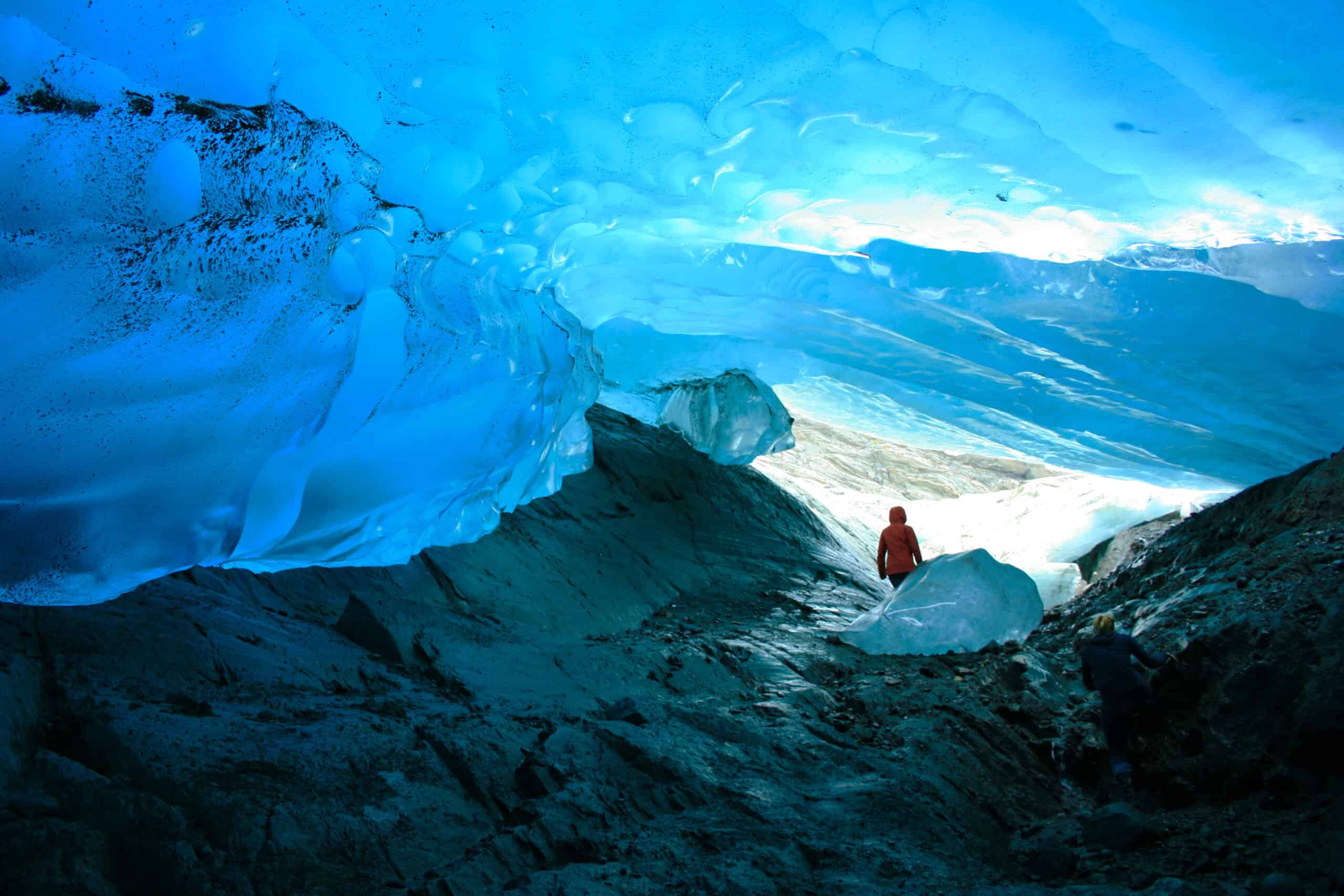
Located in Alaska, Mendenhall Glacier is renowned for its ice caves, which glow with an ethereal blue light. The glacier flows down from the Juneau Icefield, constantly reshaping its surrounding landscapes. The caves beneath the glacier offer an otherworldly view, where the ice looks translucent and delicate. As it advances and retreats, Mendenhall leaves behind vibrant turquoise pools and dramatic ice formations that change with the seasons.
Fox Glacier, New Zealand

Fox Glacier is one of the few glaciers in the world that descends into a temperate rainforest. Its steep, rugged ice formations contrast sharply with the surrounding green mountains. The glacier’s surface has sharp, jagged crevasses and towering ice pinnacles. Its river of ice stretches down nearly 8 miles from the Southern Alps to lower altitudes. Visitors can walk near the glacier’s face, where massive ice blocks tumble down to the valley floor.
Grey Glacier, Chile
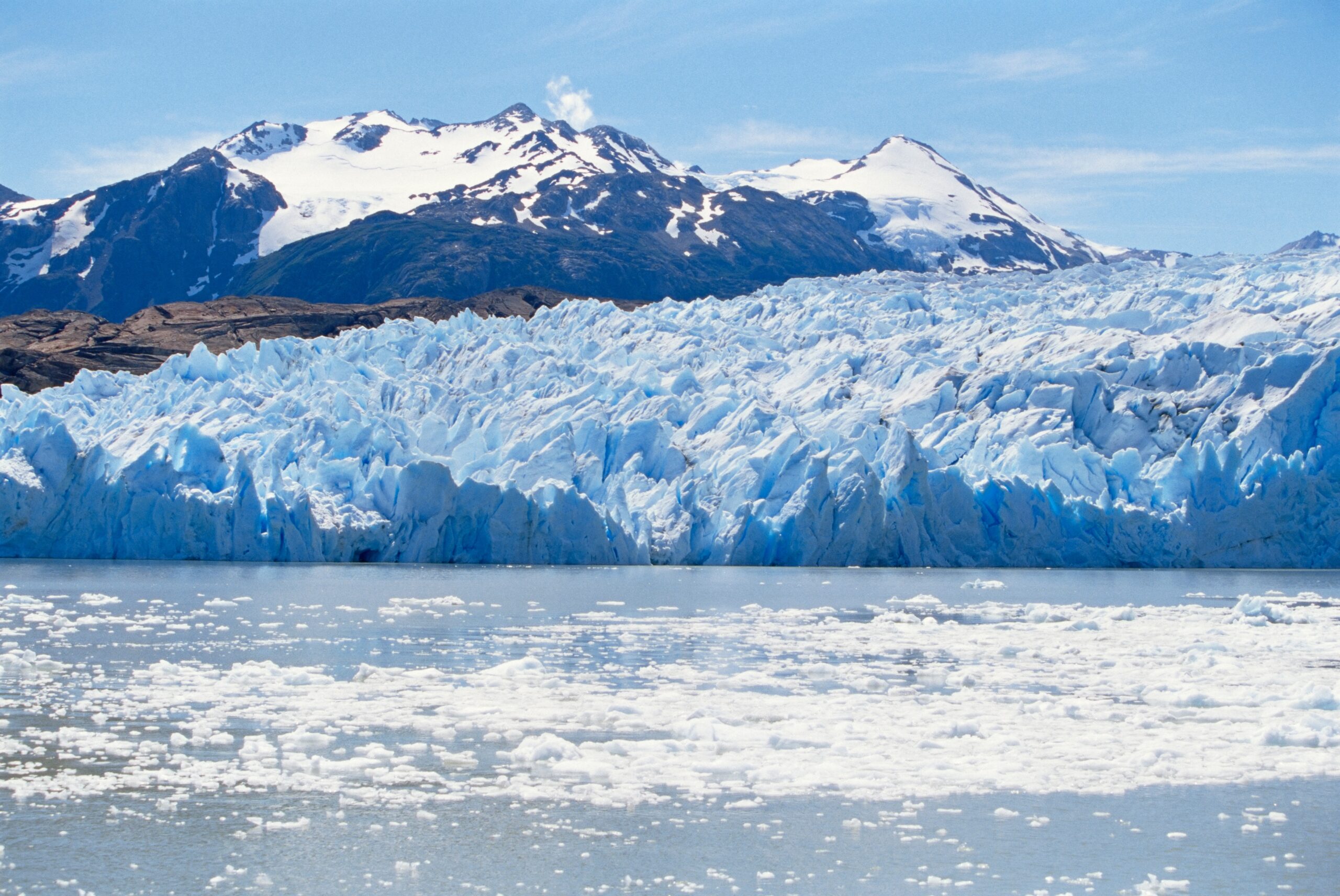
Grey Glacier sits in Torres del Paine National Park and is famed for its stunning colors. The glacier’s ice can appear almost silver in some lights, creating a shimmering effect on the water. Massive icebergs break off from the glacier and float in the lake, reflecting brilliant shades of blue and white. The glacier covers over 100 square miles and is marked by deep crevasses and towering ice walls. Its vibrant hues change with the light, offering a constantly evolving view.
Furtwängler Glacier, Tanzania

Located near the summit of Mount Kilimanjaro, Furtwängler Glacier is a unique sight in Africa. Sitting just below the mountain’s peak, it contrasts sharply with the surrounding volcanic rock. The glacier is small, but its location at such a high altitude gives it a surreal and isolated appearance. Its ice appears stark white against the dark mountain, and the glacier is rapidly retreating due to climate change. The view from Kilimanjaro’s summit, with the glacier below, is breathtaking.
Aletsch Glacier, Switzerland
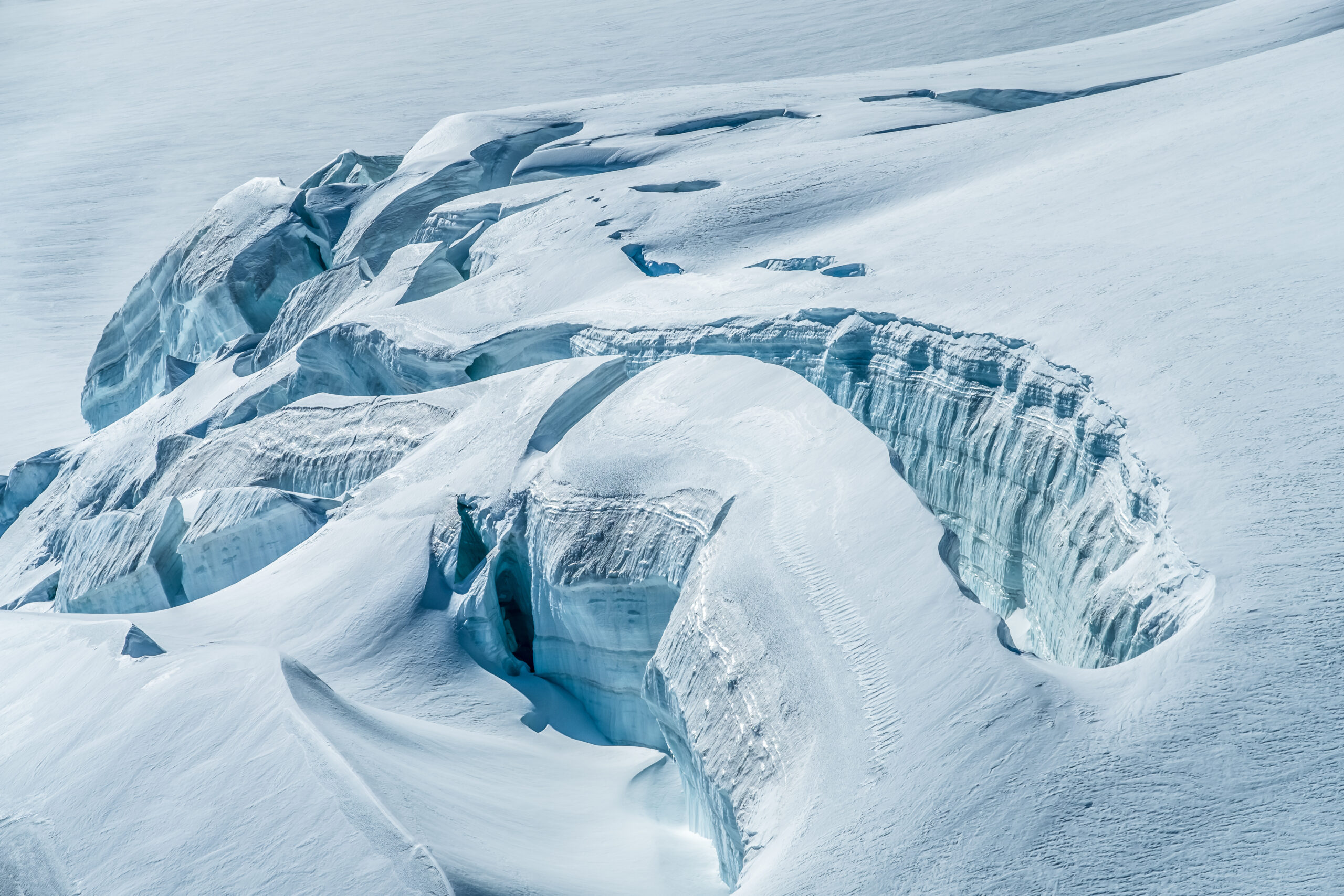
Aletsch Glacier is the largest in the Alps, spanning over 14 miles. Its surface is marked by deep grooves and a thick band of moraines running through its center. The glacier’s ice appears a bright blue in areas, contrasting with the dark rocky mountains that surround it. It flows through a steep valley, offering dramatic views from every angle. Hiking trails allow visitors to explore its rugged landscape and witness the glacier’s impressive size up close.
Columbia Glacier, USA

Columbia Glacier is a tidewater glacier in Alaska, known for its dramatic icebergs and vibrant blue ice. Stretching over 34 miles, the glacier flows from the Chugach Mountains into Prince William Sound. The glacier’s frequent calving events send massive ice chunks into the sea, creating a constantly shifting landscape. Its deep blue ice contrasts beautifully with the surrounding green mountains and cold ocean waters. This dynamic glacier is one of the fastest-moving in the world, retreating rapidly due to climate change.
Baltoro Glacier, Pakistan
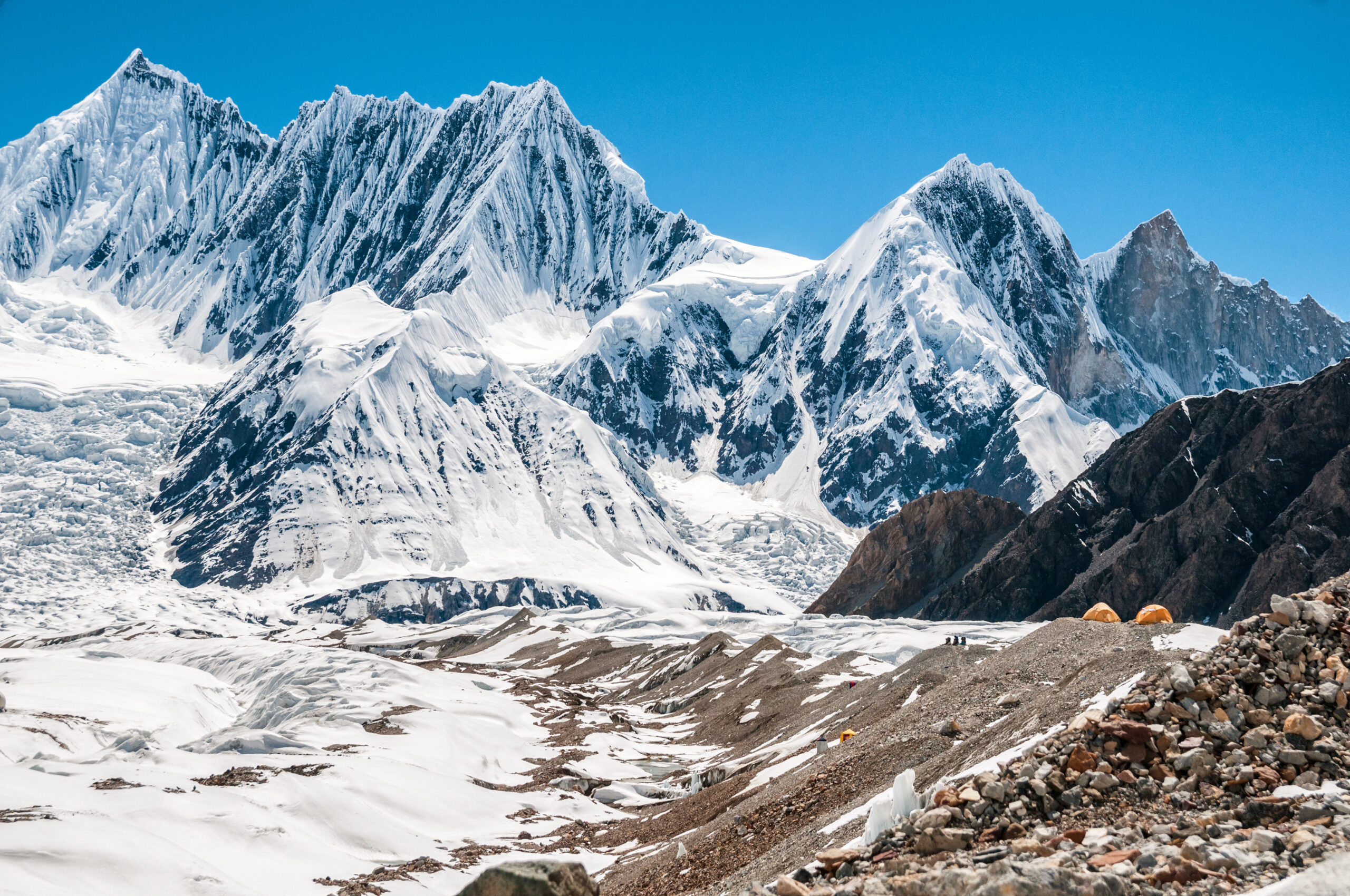
Baltoro Glacier is one of the largest glaciers outside the polar regions, located in the Karakoram Range of Pakistan. Stretching over 39 miles, it weaves through some of the world’s highest peaks, including K2. The glacier is renowned for its rugged beauty, with towering ice spires and deep crevasses. Its surface is littered with debris from surrounding mountains, giving it a unique, dark appearance. Baltoro’s massive scale and dramatic surroundings make it a surreal and awe-inspiring sight.
Jostedalsbreen Glacier, Norway
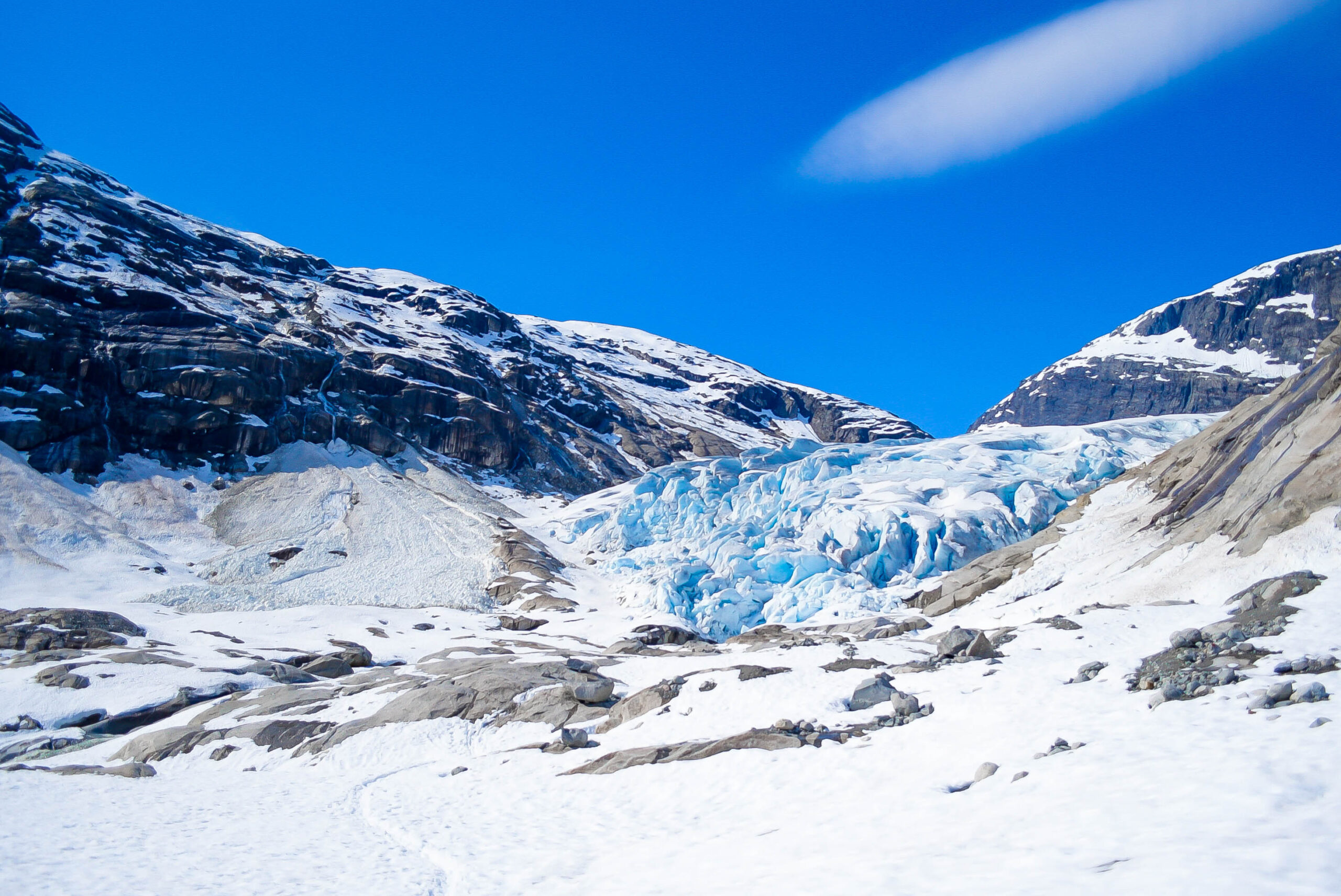
Jostedalsbreen Glacier is the largest glacier in mainland Europe, covering over 180 square miles. Its multiple arms stretch down into lush valleys, creating a striking contrast between the white ice and green landscapes. The glacier is surrounded by waterfalls and fjords, adding to its stunning beauty. Deep crevasses and ice caves form across its surface, giving it a rugged and ever-changing appearance. The vibrant blue hues of the glacier ice make it a truly surreal sight in Norway’s rugged wilderness.
Svartisen Glacier, Norway

Svartisen Glacier, located in northern Norway, is famous for its striking blue ice and complex formations. The glacier is divided into two sections, with Svartisen meaning “black ice” in Norwegian, due to the deep blue color that can appear almost black in certain lights. Its surface is crisscrossed with dramatic crevasses and jagged ice peaks, creating an otherworldly landscape. Svartisen’s lower altitude makes it easily accessible, allowing visitors to witness its surreal beauty up close.
Franz Josef Glacier, New Zealand
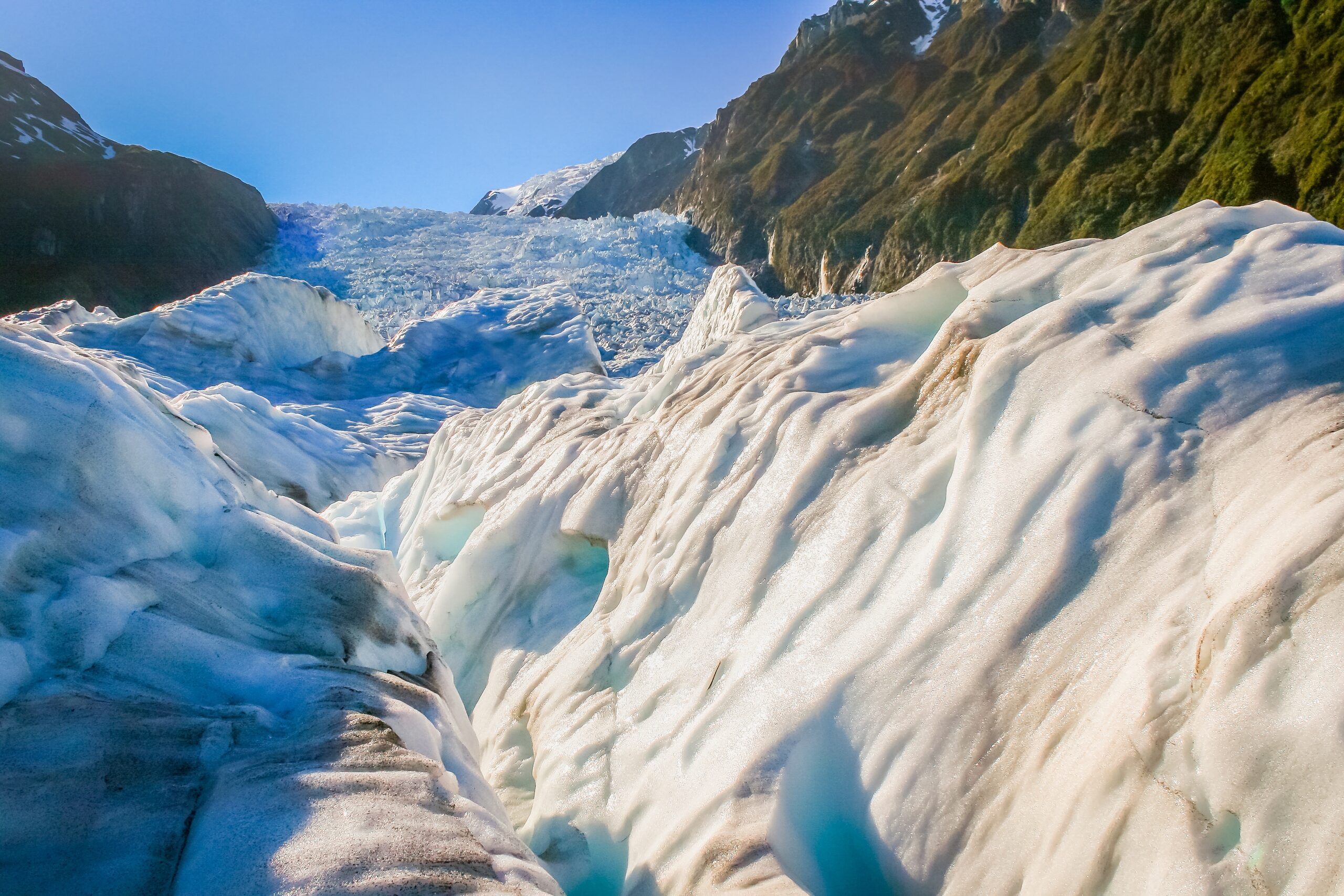
Franz Josef Glacier is one of the few glaciers in the world that descends into a rainforest, making it an unusual and surreal sight. The glacier’s steep descent from the Southern Alps creates sharp, rugged ice formations. Its surface is dotted with deep crevasses and pinnacles, giving it a jagged, frozen landscape. Surrounded by lush green forests, Franz Josef offers a rare combination of icy wilderness and temperate vegetation, making it a unique glacier in both structure and setting.
Hubbard Glacier, USA
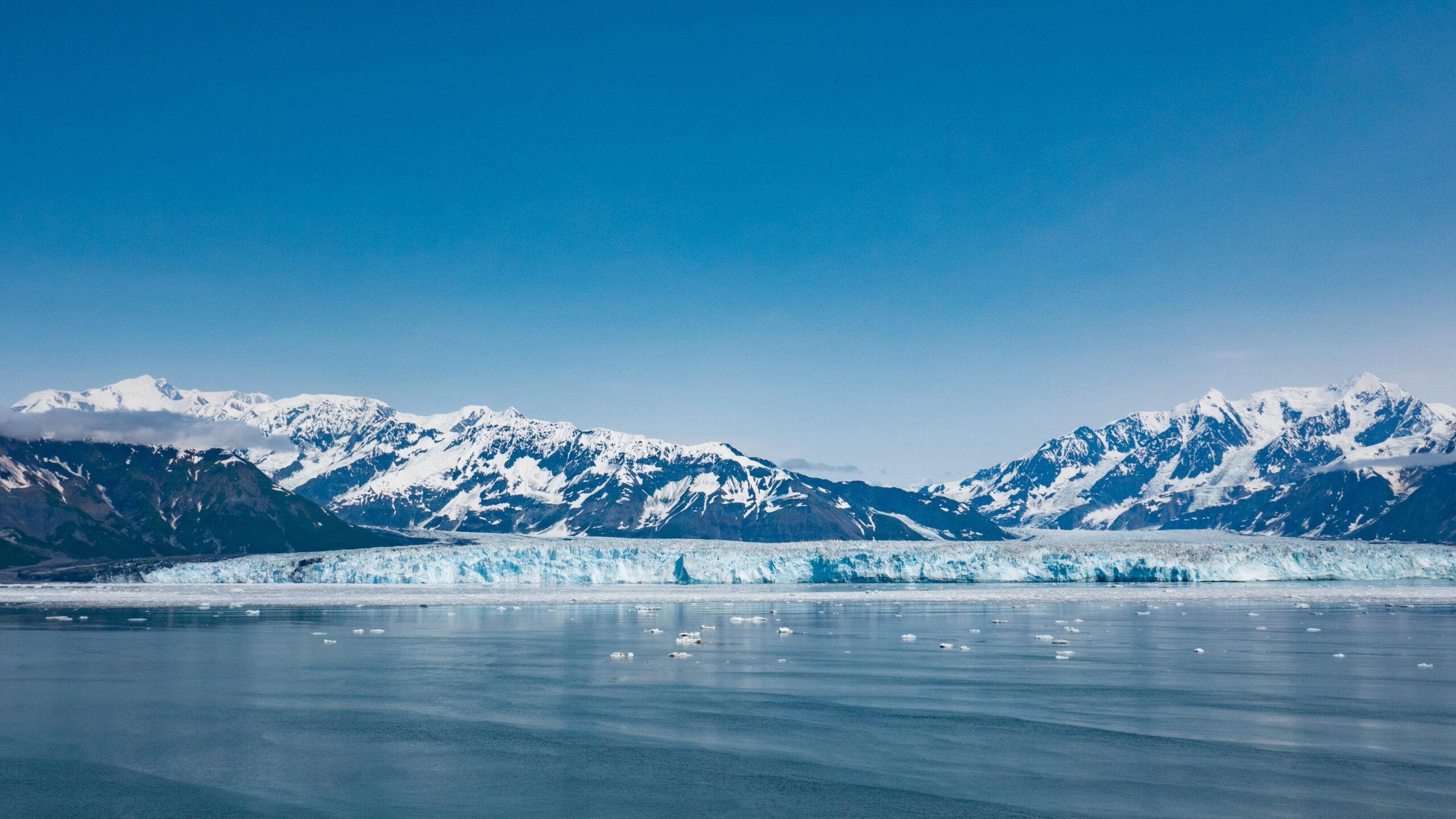
Hubbard Glacier, located in Alaska, is the longest tidewater glacier in North America, stretching over 76 miles. Known for its towering ice walls that can reach up to 600 feet, the glacier frequently calves massive icebergs into the sea. Its ice appears a brilliant blue, especially in sunlight, adding to its surreal beauty. The glacier’s front is constantly advancing, unlike many others that are retreating, which makes it a fascinating and dynamic natural wonder to witness.
Margerie Glacier, USA

Margerie Glacier is a stunning tidewater glacier located in Glacier Bay National Park, Alaska. Stretching 21 miles, the glacier is known for its towering ice cliffs, some over 250 feet high. Its ice displays a spectrum of colors, from brilliant white to deep blue, depending on the light. Frequent calving events send huge chunks of ice into the sea, creating dramatic splashes and booming sounds. Margerie’s striking ice formations and vibrant colors make it one of Alaska’s most breathtaking glaciers.
This article originally appeared on Rarest.org.
More from Rarest.org
8 Discontinued Snacks Fans Still Miss Today
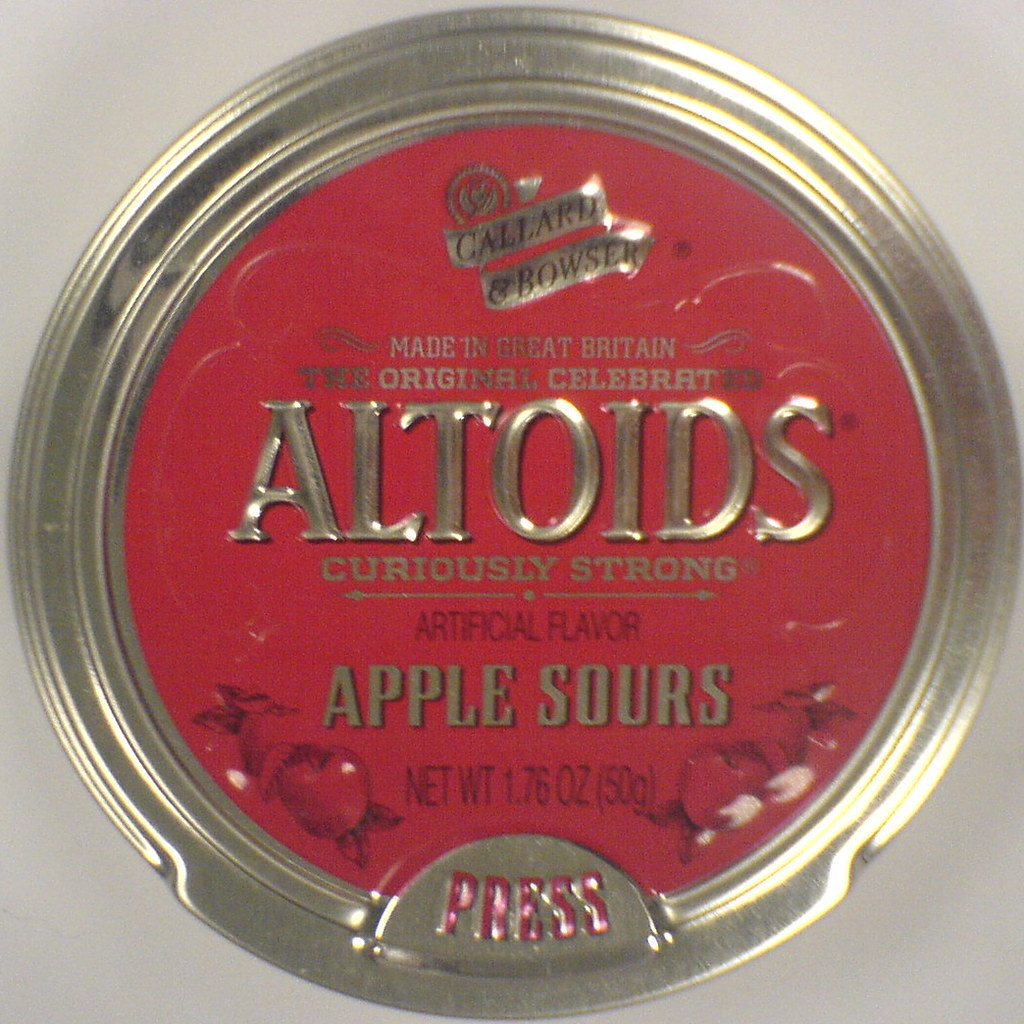
Many beloved snacks from the past have disappeared from store shelves, leaving fans yearning for their return. Read More.
13 Unusual Architectural Wonders Hidden Around the World
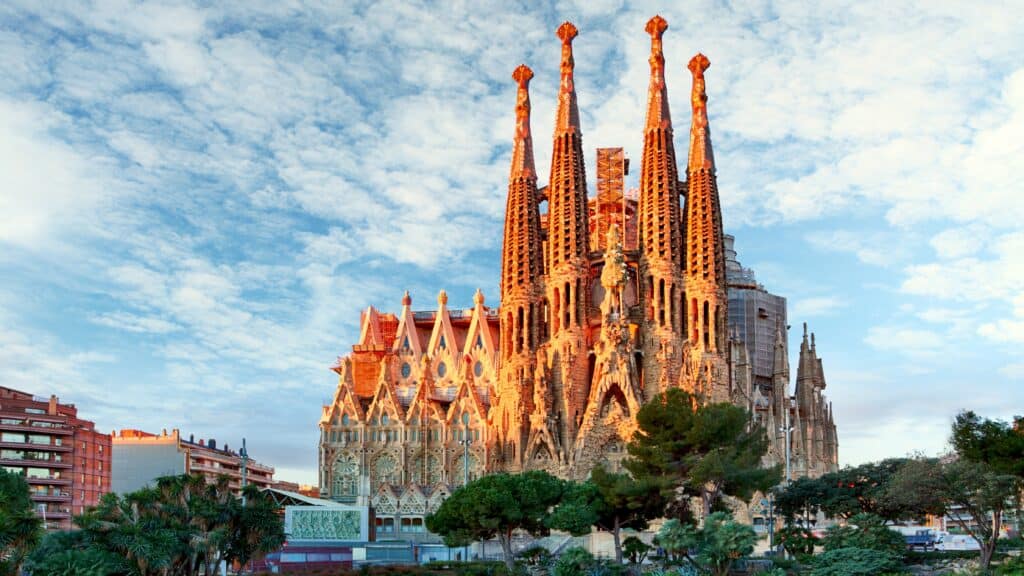
All around the world, hidden architectural wonders blend creativity, history, and ingenuity in ways that often go unnoticed by most travelers. Read More.
9 Obscure Video Games That Became Cult Classics

Sometimes, video games don’t find success right away but later gather a dedicated fan base that turns them into cult classics. Read More.
